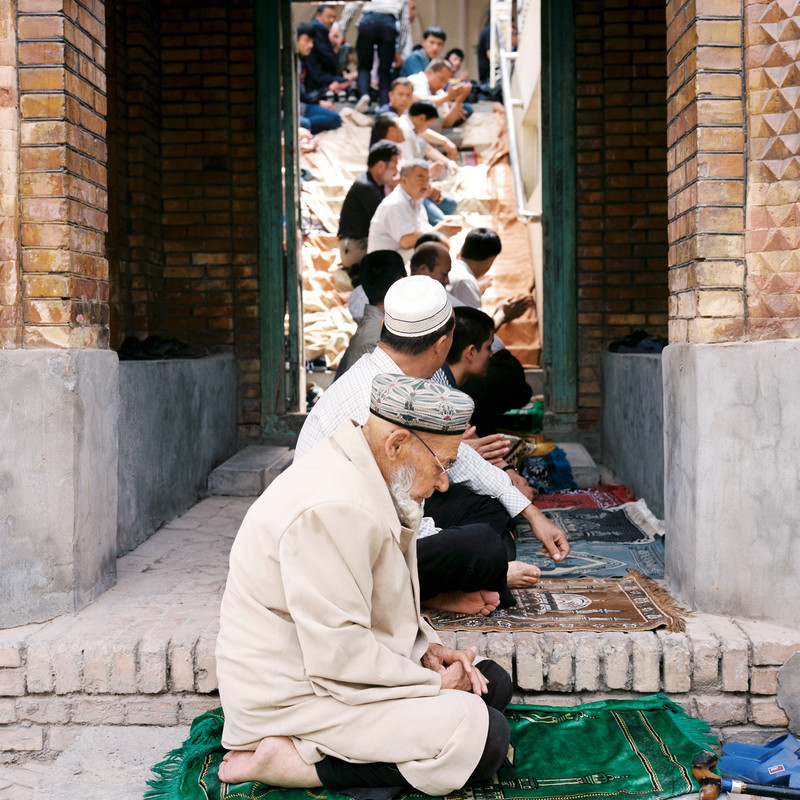

Hotan is an important city on the southern branch of the Silk Road. It’s a Saturday night evening. I’m in the city since several days and my flight back to Urumqi has been canceled due to a sand storm in the region. It’s been 3 weeks I’m in Xinjiang photographing the Chinese Wild West.
China's Xinjiang province is the country's most westerly region, bordering on the former Soviet states of Central Asia, as wellas several other states including Afghanistan, Russia, and Mongolia. The largest ethnic group, the Muslim, Turkic-speaking Uighurs, has lived in China's shadow for centuries. The region has had an intermittent history of autonomy and occasional independence, but was finally brought under Chinese control in the 18th century.
My hotel located on the People’s Square (The City main square) of the city where a big statue of Mao Zedong is hand shaking a local Uighur. For this small city of Southern Xinjiang mostly inhabited by Uighurs the People’s Square represent a large perimeter with an invisible border dividing the square into two parts, the Uighurs and the Han Chinese with this occasion armed Chinese military all around and in the middle of the square. On one part of the square the Han Chinese are into their Tango dance classes with speakers bursting Chinese Tango music. On the other side a traditional Uighurs show, with traditional music, costumes and dance is taking place at the bottom of the Statue of Mao on a permanent stage.

The situation, which may appear quite surrealist for a foreigner, seems totally normal for the locals which share this music chaos and fake appearance of cross culture which rather seem like culture assimilation is in fact the essence of fraction and division of a society in this part of Western China.
In the 2000 census Han Chinese made up 40 per cent of the population of Xinjiang, excluding large numbers of troops stationed in the region and unknown numbers of unregistered migrants, and Uighurs accounted for about 45 per cent.
Economic development of the region under Communist rule has been accompanied by large-scale immigration of Han Chinese, and Uighur allegations of discrimination and marginalization have been behind more visible anti-Han and separatist sentiment since the 1990s. This has flared into violence on occasion these past years.

International attention turned to Xinjiang in July 2009 when bloody clashes between Uighurs and Han Chinese in the region's main city, Urumqi, prompted the Chinese government to send large numbers of troops to patrol the streets. Nearly 200 people were killed in the unrest, most of them Han, according to officials.
Protests against Chinese rule had already emerged in the 1990s, to which the Chinese authorities reacted forcefully. Protests resumed in March 2008 in the cities of Urumqi and Hotan, and spread to Kashgar and elsewhere through the summer - coinciding with the Olympic Games in Beijing. There were reports of bus bombings and attacks on police stations.
Beijing has sought to deal with the unrest with a mix of repression and efforts to stimulate the region's economy, including through increased investment by state-owned firms.
click to view the complete set of images in the archive






